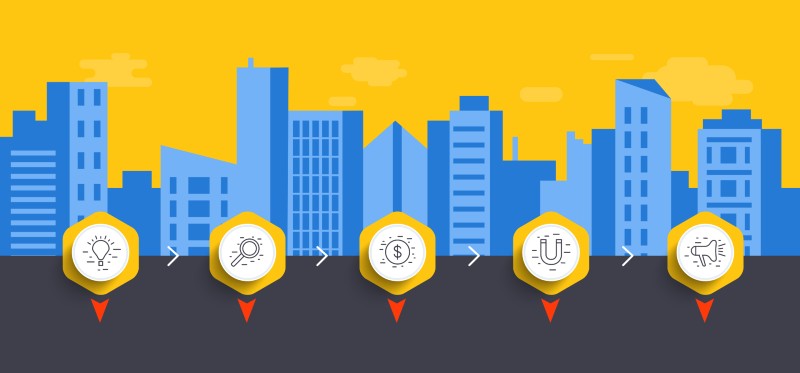
Customer journey mapping is an important part of any brand’s marketing strategy. A customer journey map helps you to visualise and truly understand your customer’s interactions with your brand, allowing you to tailor your business and marketing strategies to fit. Let’s summarise what is included in a customer journey map.

Stages/episodes
These are the stages that customers experience as they interact with your company or brand. Episodes are diverse, depending on the business and the customer’s journey. In general, however, the episodes are:
- Awareness: At this stage, the customer discovers the company or brand, often by being the target of their marketing efforts.
- Consideration: At this stage, the customer knows about the company or brand, and willingly puts in the effort to learn more about them.
- Decision: At this stage, the customer decides whether to go with the company or brand, based on how well they fit their needs.
- Purchase: At this stage, the customer makes their purchase. Here, the focus should be on fulfilling the customer’s expectations, as they are now in direct contact with the company or brand.
- Receiving: At this stage, the customer receives the product or service.
- Advocating: The customer’s positive experience leads to this stage, where they willingly advocate the company or brand.
Customer needs and pain points
This outlines what customers need in order to be at each stage. The needs can be categorised into functional, emotional and social, depending on the business objective. If you map out the needs, you also need to map out the pain points, as they both determine whether the customer continues with or quits the process. This will help you to identify the emotions of the customer at every stage, positive or negative.
Actions and touchpoints
By knowing and understanding everything customers do in each stage of the buying process, you also know what touchpoints they encounter. For instance, the customer might be exposed to paid advertising whilst reading content online, or ask questions to peers through a messaging platform, or use social media for different purposes. This part explores where to reach the customer and how to understand their behaviour.
Experience gaps
This is the part that summarises the findings and insights that have already been mapped out. This is where you can analyse the gaps between the customer needs and pain points and solve them by utilising the touchpoints.
Solutions and opportunities
This is the final and perhaps most important part of the customer journey map, where the experience gaps are analysed. Solutions or opportunities are brainstormed and developed to fill the experience gaps, which will improve the customer experience in that particular stage.
Want to learn more?
I hope this blog post has been a useful introduction to the topic of customer journey mapping. For more in-depth information and advice, read my full-length guide here! From reading this guide, you will learn:
- what customer journey mapping is
- where customer journey mapping fits in with digital marketing
- what exactly is in a customer journey map
- why customer journey mapping is important
- how to do customer journey mapping
- examples of customer journey maps for B2B and B2C companies







